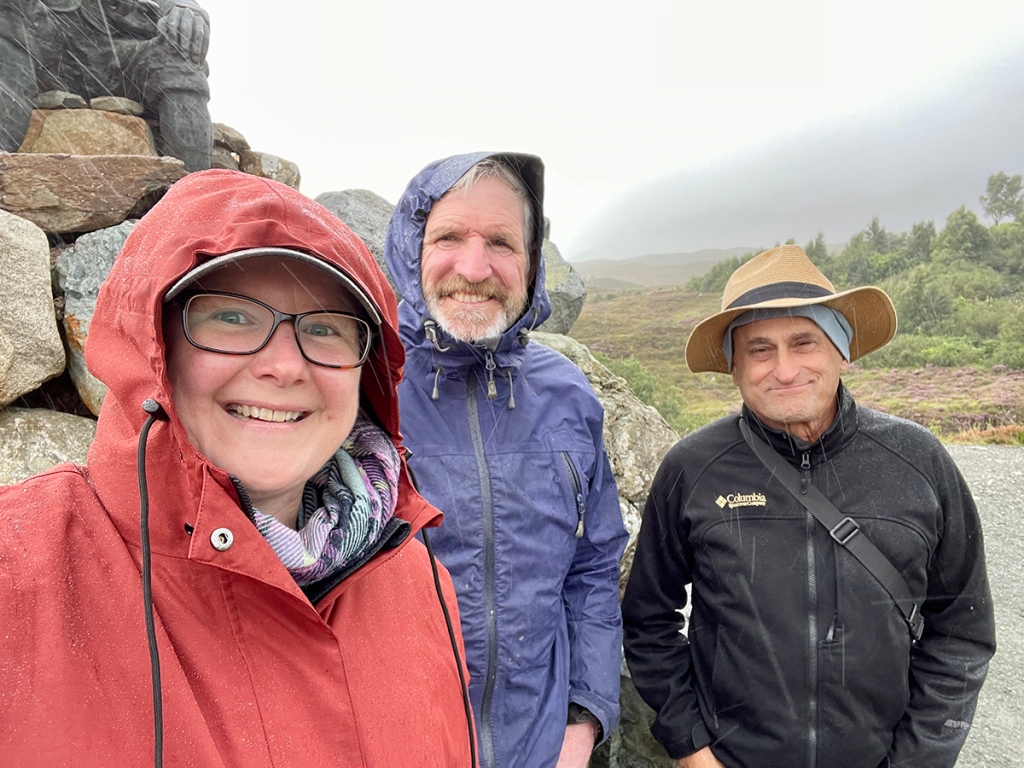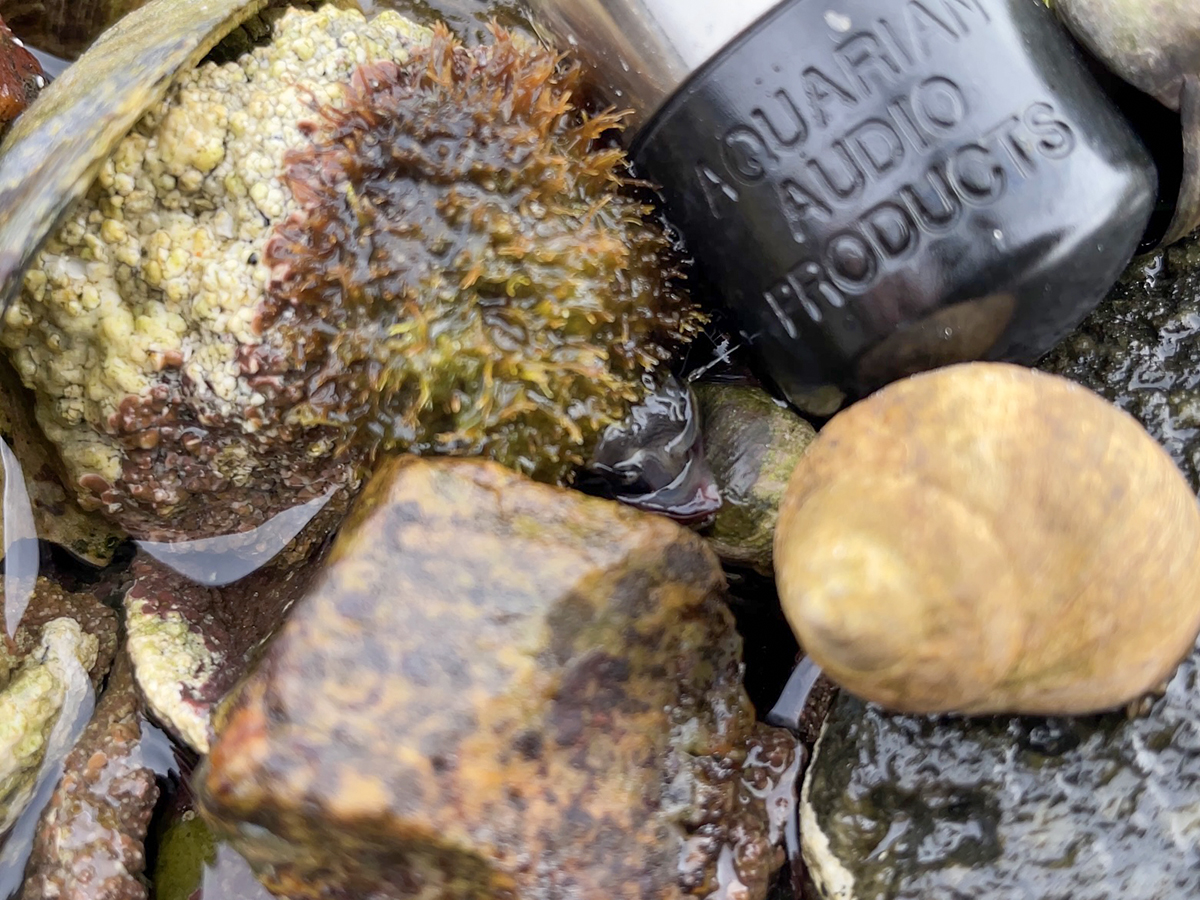Since I started my residency* at the Admiral’s House on Skye in early August, I’ve written and rewritten about 5,000 words in short-form texts that relate to periods of attentive listening, observations, and listening back to field recordings. This doesn’t include this blog, the social media posts, or studio journal I’ve kept during this time. The following text is one of the last I’ve written, bringing me a little closer to what I hope to achieve with my writing. I may share other texts in time. This exercise has delighted and surprised me, yet there is much more work to do within ‘The Sonic Language of (Lost) Landscapes’. It will be an ongoing project. With a framework for moving forward in my work now in mind, I have many more landscapes to experience, listen to and connect with, including some closer to home. Thanks to my field assistant and partner, Cameron Porteous for the weather updates, literal hand holding as I navigated rocky, hilly terrain, photography, company and most importantly, guilt-free time to disappear inside sub-surface sonic worlds or the studio. Also thanks to Brian D Cohen for being my fellow artist in residence at this time.
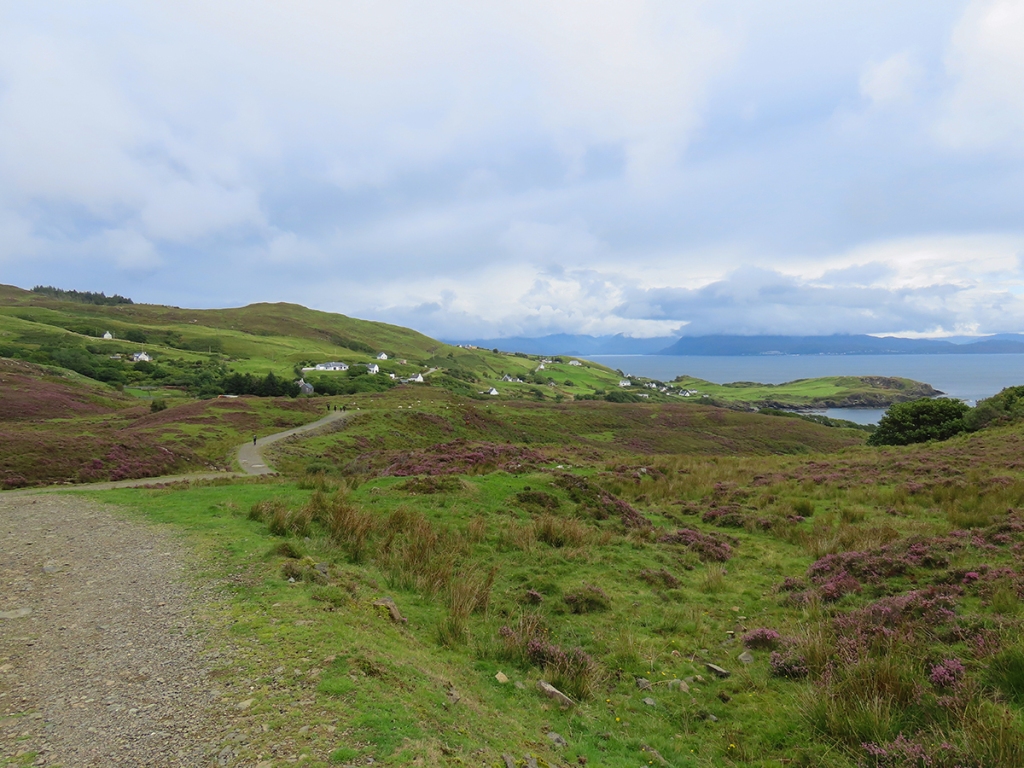
Sleat, 25 August 2023
Having worked in the studio for several days, it was time for a day trip. We chose the Sleat Peninsula, about 45 minutes southeast down the A87 to Broadford, before heading south on to Sleat’s shoe-shaped land mass — one of five peninsulas branching out from the centre of Skye. The road passes through dwarfing scenery that starts at Sligachan, past the steep sides of Ben Lee above Loch Sligachan, winding past Sconser through to Luib and Dunan, with Loch Ainort on one side and the Red Cuillins and the peaks of Glas Bheinn Mhòr (Big Grey Mountain) and Glas Beinn Bheag (Little Grey Mountain) on the other. Two Cuillin ranges dominate the skyline here — the Black Cuillin and the Red Cuillin, separated by Glen Sligachan. The Black Cuillin is said to be the country’s most challenging mountain range, over 11 kilometres long and above 915 metres in places; the ridge contains 11 Munros and 16 other summits that have challenged significantly braver adventurers than me. The mountains we rush past today are blanketed in dull velvet greens, scored with water courses and the occasional tourist-attracting waterfall, their curved peaks clad in layers of fibrous cotton wool.
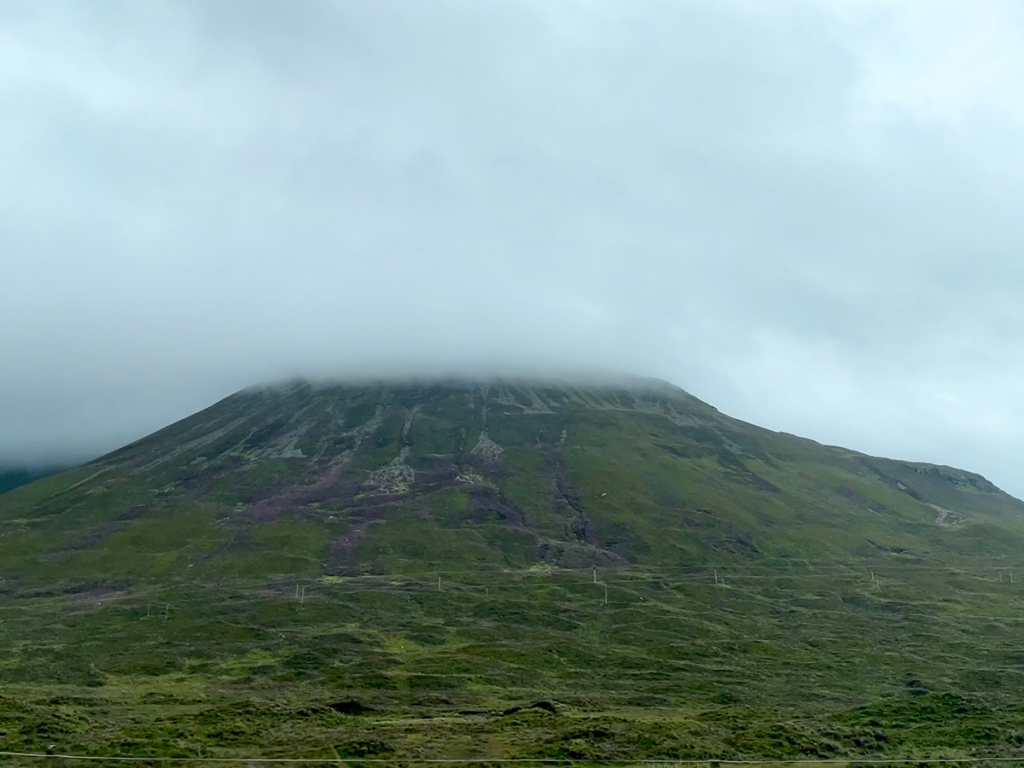
Road signs here are in Gàidhlig and English. As we pass each one, I say the name aloud. They offer so much detail about a place and they’re lovely to mouth, some catch in the back of the throat**. None of the Gàidhlig names are on our digital maps, only the English ones, and certainly not the mountains. Google gives sparing detail, and the car’s satellite navigation gives even less — they’re only interested in the destination, not the journey.
It’s hard to describe the scale of landscapes like this. These mountains overwhelm me. There is a feeling of being dwarfed by the magnitude and the thing I have about not being able to see the horizon, but that’s not it. I don’t feel part of this place. I experienced a similar feeling in 2019 travelling the west of Iceland, passing through long, deep valleys flanked by mountains on one side, fjords below the road on the other, and where water drops to the valley floor in gushing streams. Driving along Skye’s A87, old stone walls and newer fence lines in miniature snake up and down slopes, their ends lost in cloud. Powerlines run adjacent to the road before forking away to places behind the mountain, crooked lines and cross hatches marked on wet, dark green painterly bracken. Simple, whitewashed stone houses dot the landscape between the towns and villages — stark against the backdrop of the mountains. It’s rare to see building materials other than rendered stone painted white, although wood-clad boxes seem to be a trend with new builds.
Turning south outside Broadford, our arrival in Sleat — not on Sleat as I was told by locals — is marked by a cattle grid and stone bridges with spiked capstones. We hadn’t seen bridges with capstones like this before on the island. The other noticeable difference was the vegetation. There were more trees of mixed species, in particular broadleaf trees — a stark contrast to the managed conifer plantations so prevalent in other parts of Skye and Raasay. The landscape closes in around you on Sleat, becoming more human in scale.
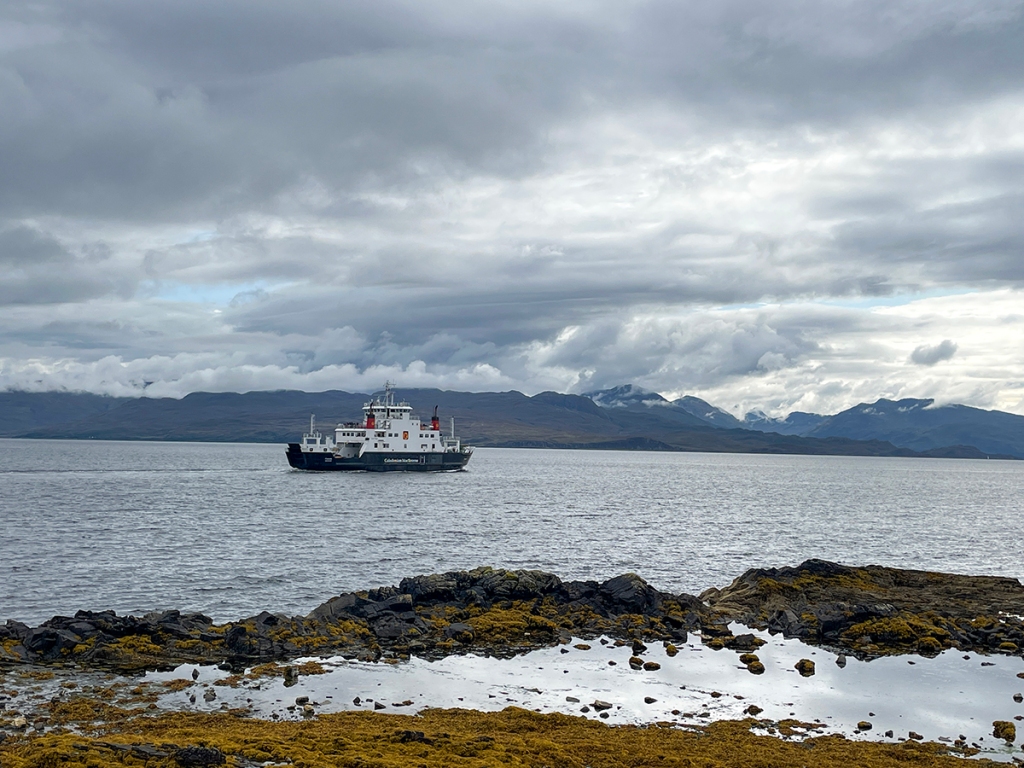
At the Armadale pier, where the ferry crosses back and forth to Mallaig on the mainland, a ferry engine sounds its presence. Travellers come or go, their sounds carried out to sea on the wind. Waiting for the ferry to depart, I pick my way across the rocks, closer to the water. It’s low tide. Higher up the shore are lines of seaweed, like raked hay, at various stages of drying. Treading carefully around the rocks and mounds of fresh, bright yellow algae interspersed with a green seaweed of a type I hadn’t seen before, I move to an area behind a small wall of rock on the water’s edge where there are shallow rock pools of rotting algae, abandoned shells, crab carcases and tiny fish. It smells briny. It’s the first I’ve noticed a smell since my beach trip to Camastianavaig. The rock pool I set up on, ripples and shudders under raindrops and a breeze ruffling the meniscus.
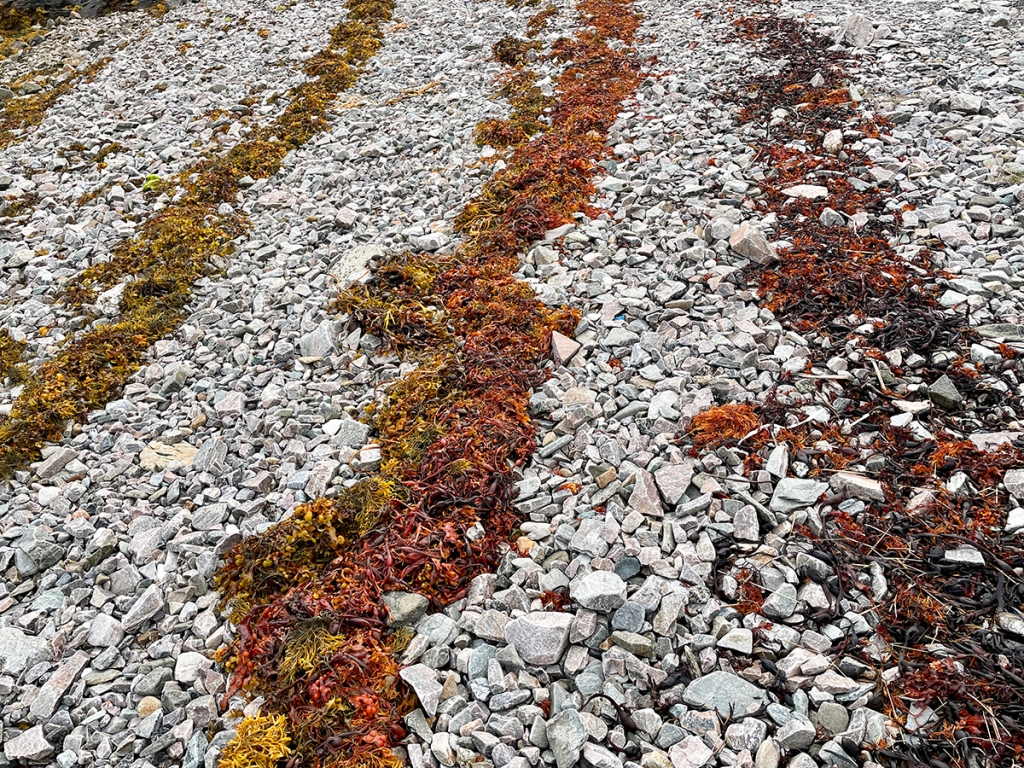
Discovering I’ve left the noise-cancelling earbuds I use for field recording back in the studio, I decide to go ahead anyway, dropping my hydrophone into the centre of the rockpool where I’d spotted a dozen or so tiny, translucent fish. I watch the waveform on my recorder spring to life. I couldn’t hear the crackly tinkles, trickles, clinks and liquid bluurps beneath the surface, the bumps and taps from unknown sources — these will only reveal themselves when I return to the studio. Instead, I watch the fish dart beneath the cover of floating algae and seaweed, oxygen bubbles pulling to the surface, and somewhere above and behind me the sound of a busy pier filling again with travellers waiting for the next ferry.
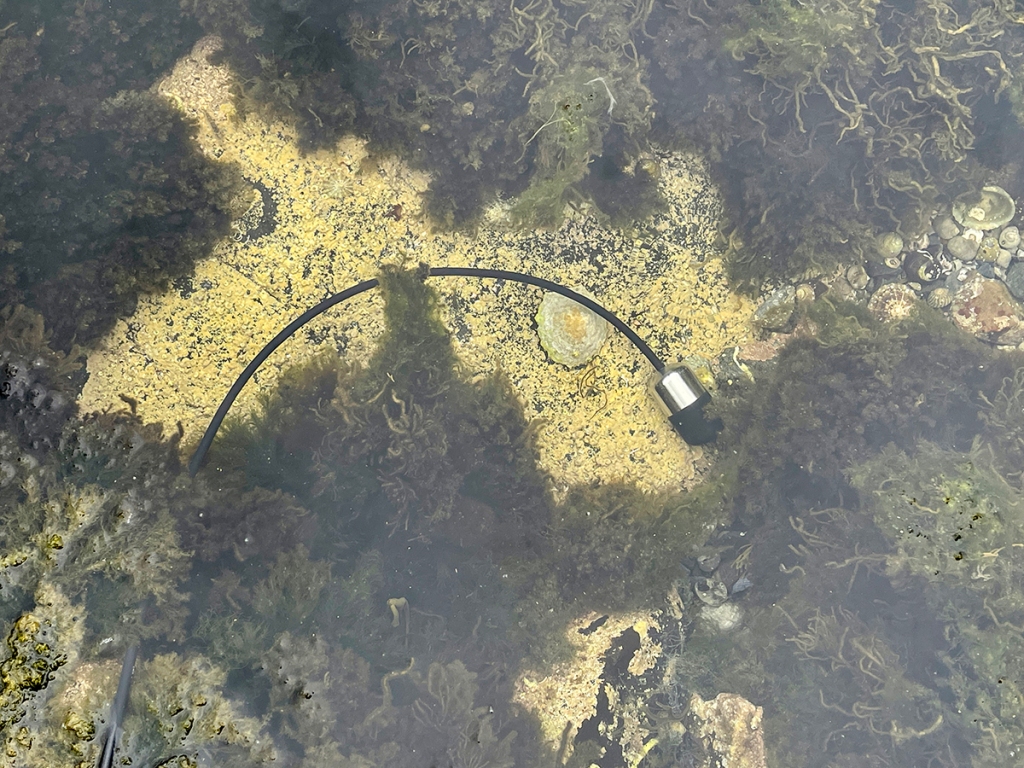
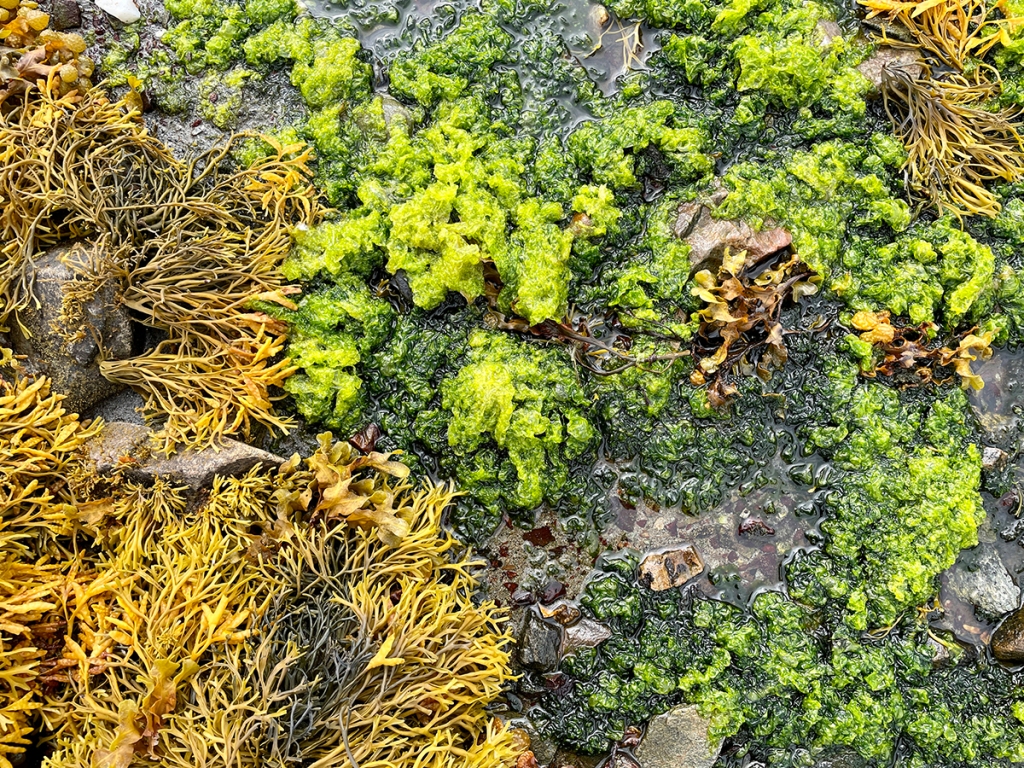
Moving back towards the carpark, I stop amongst drifts of viscous, bright green and yellow seaweed to grab photos with the macro lens on my phone. I notice the snails feeding on stringy green algae draped across the rocks. I nestle the hydrophone capsule against a rock wearing a clump of algae like a bad-fitting wig. Beneath it are smaller rocks where a tiny crab, about the size of my thumbnail, darts for cover. There are three snails within range. The ferry is now halfway across the sound towards the mainland, but a low-frequency thrum carries through the water and rock to this shallow snail feeding ground. Gulls call in the background, and a man on the pier shouts to someone who doesn’t respond. The snails move gently and ever so slowly around the microphone capsule. After several minutes, one takes a shortcut over it to the algae below it. I squat to watch. The mucous underside of the snail faces me. I can see its muscular foot moving over the algae, tentacles slowly waving as the teethy tongue works across the surface of the plant. Listening back to the soundtrack in the studio, I can hear snippets of what sound like a wet, mouthy sucking, but along with loud bumping noises of snail shells rubbing against the mic, there is environmental interference — the clicks and thrums of mechanical and electrical elements nearby. These noises dominate too much to say for sure that I could hear a grazing snail.
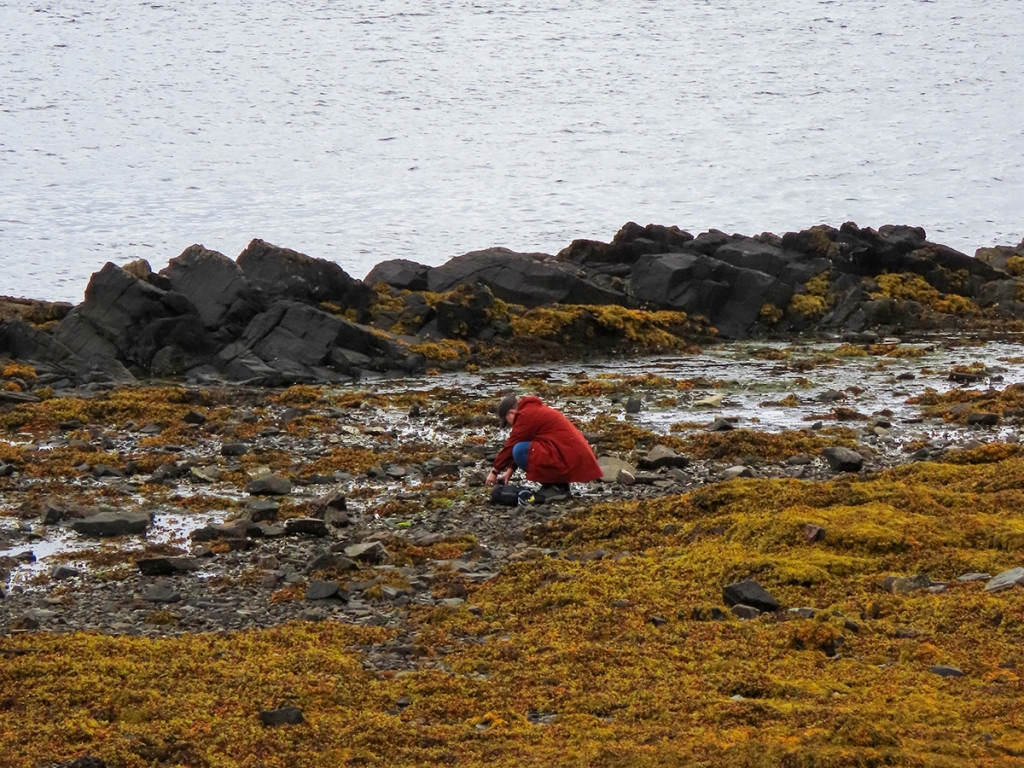
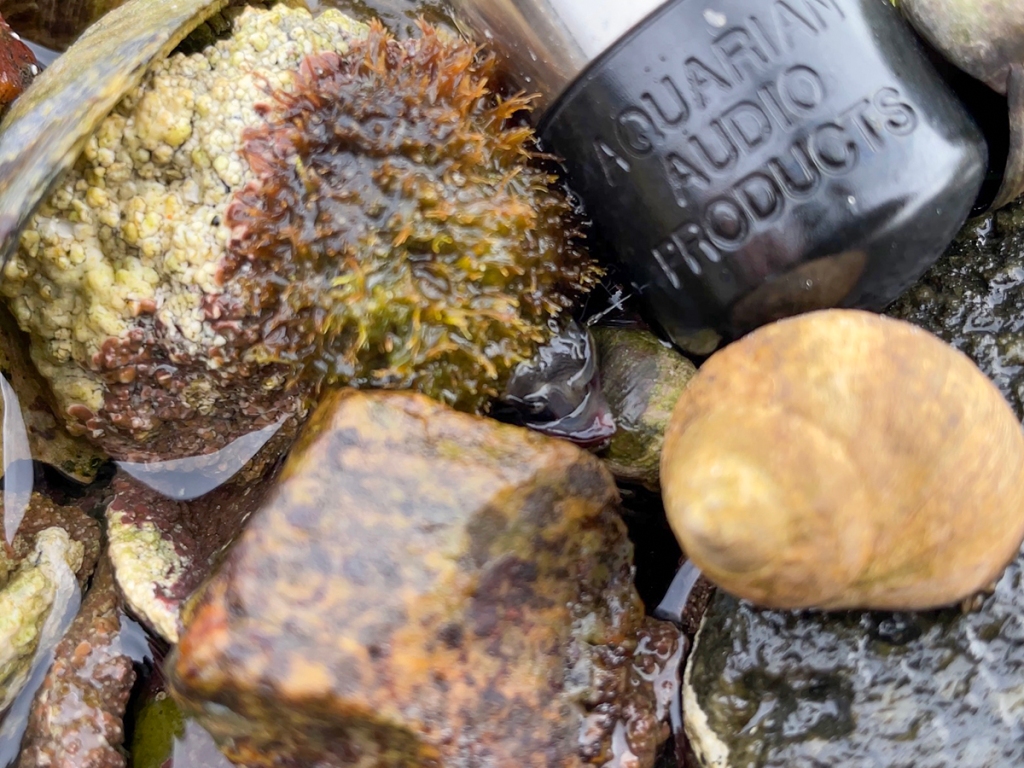
When I feel overwhelmed in a landscape, it helps to pull back to the minutiae — the intimate details of the species inhabiting these fascinating places. Within that detail is the life that makes this place and brings me closer to some form of connection with it, tiny but significant things that no tourist will ever notice.
* This residency has been self-funded.
** I have been learning Scottish Gàidhlig since July 2022.
Other posts from the UK-Scotland Artist Residency
7 August: Travelling to find home
8 August: Mosses, lichen, algae and fungi + other fascinating things
15 August: Can artists be agents of change?
20 August: Insuring my work for the future
26 August: A path through the brambles
